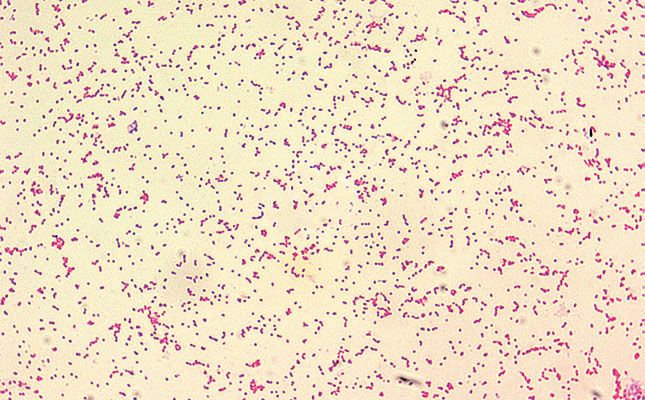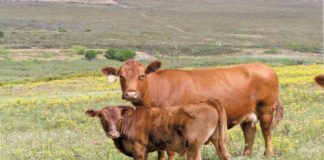
Photo: Centres for Disease control and prevention
A herd is regarded as infected with brucellosis when tests find Brucella organisms in lochia specimens, placenta tissue, foetuses and lymph nodes.
The whole herd is then placed under quarantine in terms of the Animal Diseases Act, 1984 (Act 35 of 1984).
Recording
It is your responsibility as a farmer to identify all sexually active cattle over 18 months of age individually, and record the identification in a stock register along with the blood test results.
Vaccination/branding
Administer S19 vaccination to all heifers between the age of four and eight months, and RB51 to all cows that currently test negative. Brand infected animals as soon as possible.
This should be done under the supervision of a state vet, animal health technician or a contracted private practitioner – or this person can carry out the procedure.
Animals are branded with a hot C-branding iron supplied by the state on the right hand side of the neck, approximately 15cm below the junction of the head and neck.
Quarantine
The onus rests with you as the farmer to keep infected animals in quarantine until a state vet authorises their release.
You have to notify all of your neighbours and these farms should be tested as soon as possible.
Even though cattle have tested negative, they could incubate the disease and spread it at a later stage. For this reason, you should warn prospective buyers that your herd is infected. Ideally, no livestock should be sold until the farm is clear of disease.
Permits
All infected cattle sent to an abattoir must be accompanied by a Red Cross permit. Ensure that the abattoir accepts Brucella-positive cattle. This aspect, as well as the slaughter of animals, will be discussed in more detail in a later issue.
Reactor report
This will be completed by the state vet and handed to you, the farmer.
Eradication plan
This will be developed and implemented after consultation with you.
Surveillance
Infected herds and suspect herds must receive priority.
Check all your fences as well! Once the infected cattle have been removed from the herd – be it through slaughtering or total separation – to the satisfaction of the state vet, the remaining part of the herd must undergo regular bleeding until three consecutive negative tests have been recorded.
The herd must then be re-bled six months later. Where the heifer calves of infected dams are slaughtered, the herd can be granted confirmed free (CF) status.
Where the heifer calves of infected dams are not slaughtered, the herd has to undergo a further bleed 12 months later (the fifth negative test).
The state vet will grant CF status only when satisfied beyond reasonable doubt that brucellosis has been eradicated.
Source: Ruminant Veterinary Association of South Africa.













